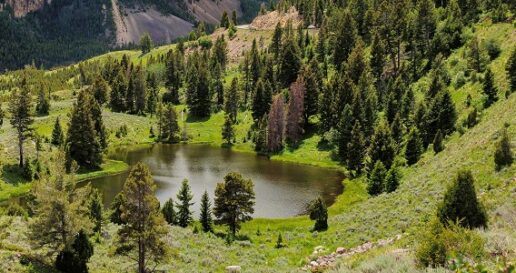
To date, Offices of Outdoor Recreation (OREC) or task forces have been established in 17 states across the country. These offices play a critical role in increasing outdoor recreation participation by working with local communities to improve infrastructure, coordinate recreation efforts statewide, and promote the benefits of engaging in outdoor recreation among the citizens of their state. These offices provide a central point of contact, advocacy, and resources at the state level for the diverse constituents, businesses, and communities that rely on the continued health of the outdoor recreation economy. They have also proven to be exceptionally effective at encouraging increased use of the great outdoors and increased participation in outdoor recreation, leading to a stronger economy.
RVIA’s Legislative Analyst Ashley Brinkman recently presented at the Minnesota Outdoor Recreation Task Force about the multitude of benefits to having an OREC office in each state, primarily on four key areas. Over the next two weeks, Brinkman provides a detailed break-down in a four-part series.
INFORMATION SHARING, COLLABORATION, FACILITATION, AND RELATIONSHIP BUILDING
The collaborative role an OREC Director plays is one of the best things about having this position in state government. Oftentimes, differing objectives can create silos, while collaboration can prevent ‘re-inventing the wheel’ – reducing redundancy and inefficiency. For example, a state’s Economic Development Agency works to strengthen economic and community vitality, the state’s Department of Natural Resources (DNR) manages, protects, and promotes a state’s natural resources, and a state’s Tourism Agency works to encourage people to live, visit, and work in a state. These three agencies’ missions are distinctly different yet have major overlap when it comes to outdoor recreation. Wouldn’t DNR benefit from the travel marketing expertise of the Tourism? Wouldn’t Economic Development benefit from having the help from DNR and Tourism on how best to promote the impressive data on the monetary value the outdoor industry brings to the state? Wouldn’t Tourism benefit from DNR’s in-depth knowledge of the state’s public spaces and how Tourism can utilize their skills to better the visitor experience to the state’s parks?
“I want to be clear,” Brinkman said, “I’m not here pointing fingers or saying any agency staff is not doing an amazing job, I’m saying that an OREC Office can act as the binding glue to make those connections, facilitate collaboration, and maximize and expand the talent already existing within state government.”
That collaboration and information-sharing is not just cross-agency within one state, but an OREC Director can connect with the network of other states’ OREC Directors to learn best practices and lessons learned from other states working similarly to better invest in the outdoor recreation industry.
A tangible example of the good work that these OREC offices are doing in information sharing shines through in the efforts of Wisconsin’s OREC office. In June 2020, the Wisconsin OREC Office conducted a Stakeholder Input Survey, seeking information from businesses, organizations, and partners in Wisconsin to use in its strategic planning process. Having state government reaching out to outdoor recreation industry stakeholders to ask what their priorities are, what issues are most important, and what improvements they would like to see made is a refreshing example of the kind of open communication we continually strive for when advocating on behalf of the industry.





